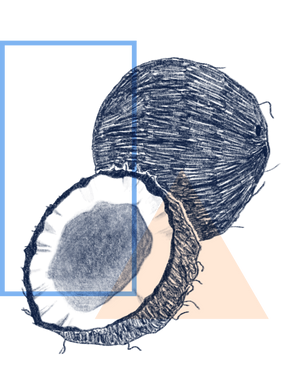MOLECULE
- Cleanses sebum with minimal disruption on Ceramides, Cholesterol and Fatty Acids
Regimen Lab Skincare Encyclopedia
Sodium Cocoyl Glycinate
V 1.0 last edited 08Aug2020

Regimen's Take
Sodium Cocoyl Glycinate is a mild surfactant, even milder than its “cousin”, Sodium Cocoyl Glutamate. The mixture of both, plus Cocamidopropyl Hydroxysultaine ensures that dirt, make-up, sunscreen, and excess sebum is washed away while leaving your skin supple and hydrated. One challenge of Sodium Cocoyl Glycinate is that it precipitates at low pH, making it unsuitable in products formulated with a pH lower than 5.
TLDR
- Amino acid-based surfactant
- Breaks down into Amino acid and Fatty acid
- Mild cleansing with minimal barrier disruption
What is Sodium Cocoyl Glycinate?
It is another amino acid-based surfactant that is composed of Glycine and a fatty acid. Since Glycine is the smallest amino acid, it allows for the surfactant to have a considerably smaller charged head compared to other anionic surfactants. Because of this, it is less damaging to the Stratum Corneum (SC) compared to other anionics.1 In a study using Franz diffusion cell system, acylglycinate surfactants were shown to have the least Transmission Index compared to sulfates, glutamates, alalinates, taurates, and soap.2 This makes sense because Glycine is a neutral amino acid, and there is no notable glycine content in the stratum corneum compared to charged amino acid species.
What are its benefits?
Sodium Cocoyl Glycinate with Sodium Cocoyl Glutamate and Cocamidopropyl Hydroxysultaine was shown to remove squalane without removing intercellular cement lipids. This proprietary blend solubilized intercellular lipids less, compared to other anionic surfactants and even to non-ionic surfactant decyl glucoside.3 In a double-blind monadic study, eczematous patients showed significant improvement in Eczema Area, and Severity Index (EASI) scores and self-perceived dryness, itch, rash, tightness, and all eczema were significantly reduced compared to baseline.4
Since it provides excellent foam and substantive creamy lather, the amount of surfactants can be decreased to lessen the potential disruption of the intercellular lipids. The characteristic creamy lather of the Tabula Rasa cleanser that leaves the skin soft is primarily due to this surfactant. Compared to most mild or non-irritating surfactants, it does an excellent job of removing make-up and sunscreen residues to prevent acne formation and other issues resulting from clogged pores.
References:
- Regan, J., Mollica, L.-M., & Ananthapadmanabhan, K. P. (2013). A Novel Glycinate-based Body Wash: Clinical Investigation Into Ultra-mildness, Effective Conditioning, and Improved Consumer Benefits. The Journal of Clinical and Aesthetic Dermatology, 6(6), 23–30. ↩︎
- Okasaka, M., Kubota, K., Yamasaki, E., Yang, J., & Takata, S. (2019). Evaluation of anionic surfactants effects on the skin barrier function based on skin permeability. Pharmaceutical Development and Technology, 24(1), 99–104. ↩︎
- Data will be shown in a separate article. ↩︎
- Regan, J., Mollica, L.-M., & Ananthapadmanabhan, K. P. (2013). A Novel Glycinate-based Body Wash: Clinical Investigation Into Ultra-mildness, Effective Conditioning, and Improved Consumer Benefits. The Journal of Clinical and Aesthetic Dermatology, 6(6), 23–30. ↩︎
